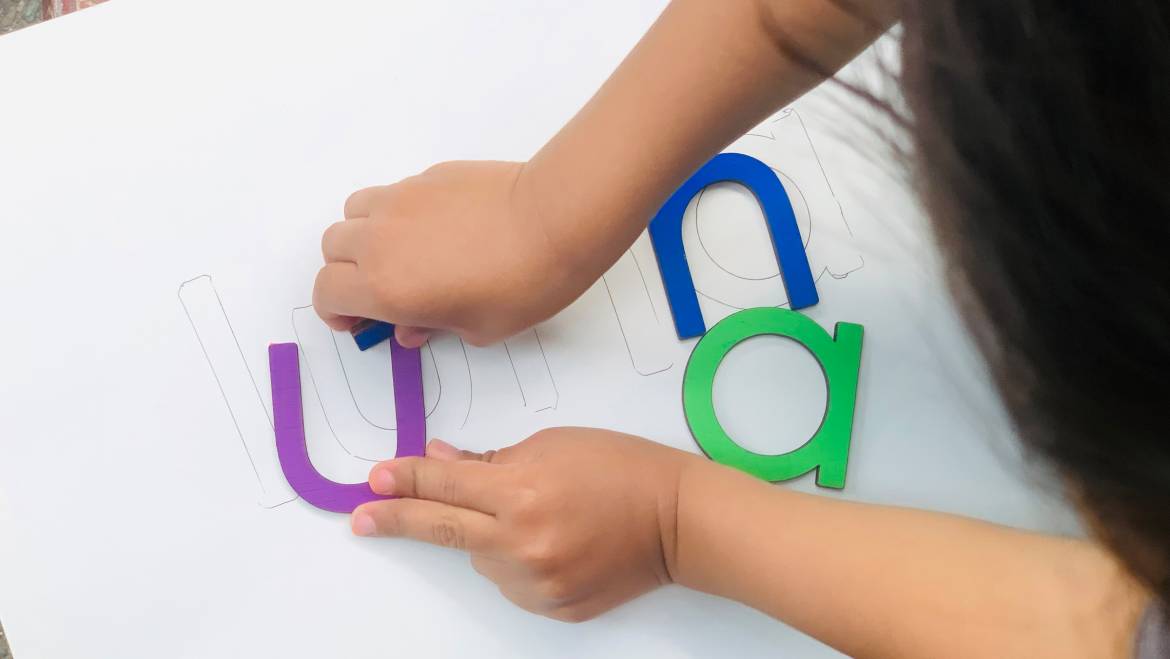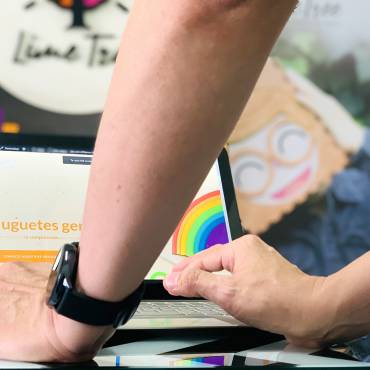I dare to say that all moms have found themselves in the dilemma that what we do with our children should be more structured. We probably think more of learning activities. Activities balanced between fun and educational (as if both were fighting with each other). It has been quite a journey, recognizing that children are learning in real life activities.
However, there are signs that we can observe and show that the child´s brain is ready to absorb new concepts. These actions, which suddenly our children do over and over again, give us the guideline to reinforce learning through activities. The signs give you an idea of when your child is ready to start learning something new. When this happens, it is time to provide them with the tools and the ideal environment to promote learning.
If your little one has taken a book and has started to “read” or maybe he has taken a crayon and has “written” things throughout the days. It can be a sign that you are ready to begin the writing and reading journey. In some methodologies such as Montessori, the child begins to write before reading. Regardless of what you choose to introduce first, the sound of the letters (phonemes) and the connection with their signs is very important in learning to read.
The little one is ready, what do we do?
Having the right tools help a more fluid learning. If you’ve seen signs that your child is likely ready to learn to read and write, you can start by making or buying a set of alphabet letters. The type of handwriting (print or cursive) is controversial. Which one you decide to teach first depends on you or what is learned at school. There is a lot of information, advantages and disadvantages, of cursive or print.
At home I encourage reading and most books use print . For this reason, the activities that we will present here will be with a print alphabet, the letters with which my son is most familiar. Not sure where you can get an alphabet? Check out our beautiful wooden letters here.
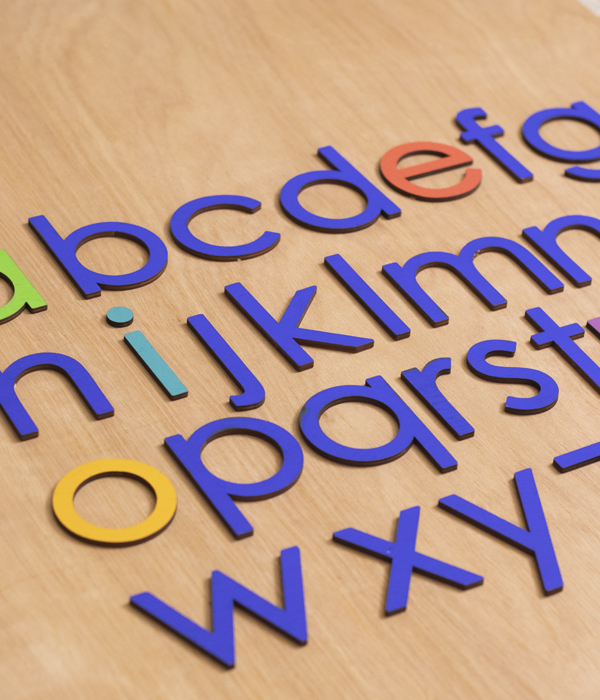
Letters
Printed type letters on cloth bag. Contents: 86 wooden letters (4 sets of vowels and 3 sets of consonants) and 11 symbols (4 tildes, 4 periods and 3 small marks).
Here are 3 fun games to start the exciting journey of reading-writing with your little one.
1. Awesome name
Materials: Letters corresponding to your child’s name, playdough and a rolling pin.
Your little one is very familiar with his name. He has heard its sound since he was a baby. It is the perfect word to start exploring the world of letters. Use the rolling pin to flatten the playdough together. Try to extend it according to the length of the name and the letters that will be used. Starting with the first letter, make an impression and sound out the letter. Finally join all the sounds. Your little one would have read out his name.
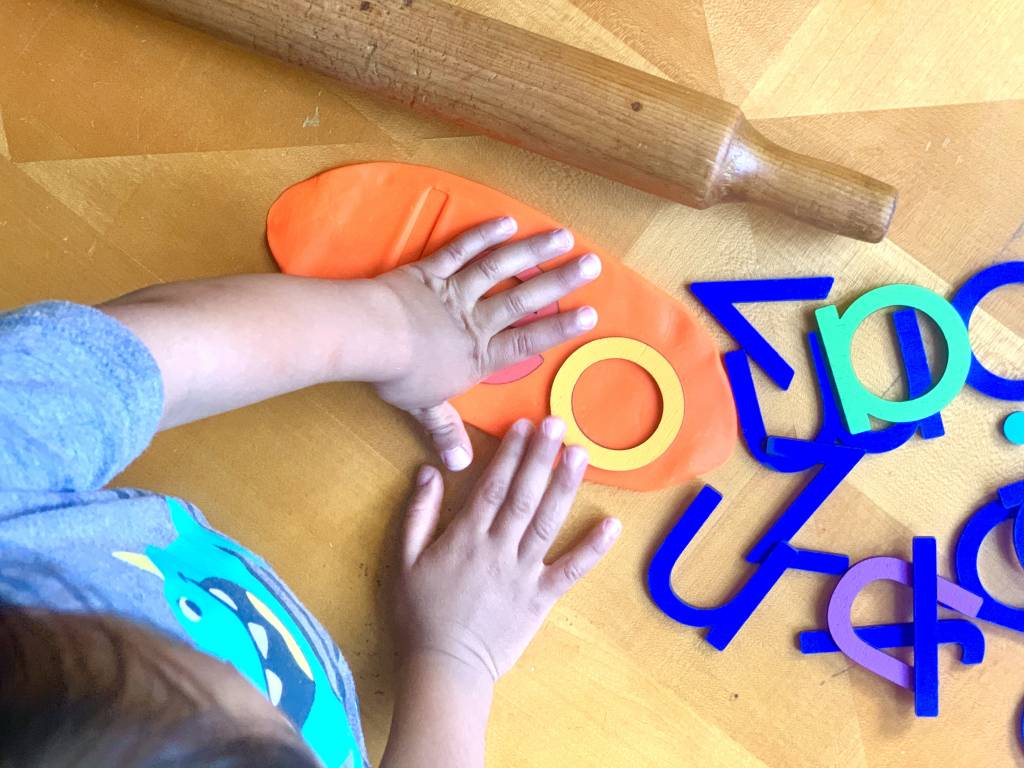
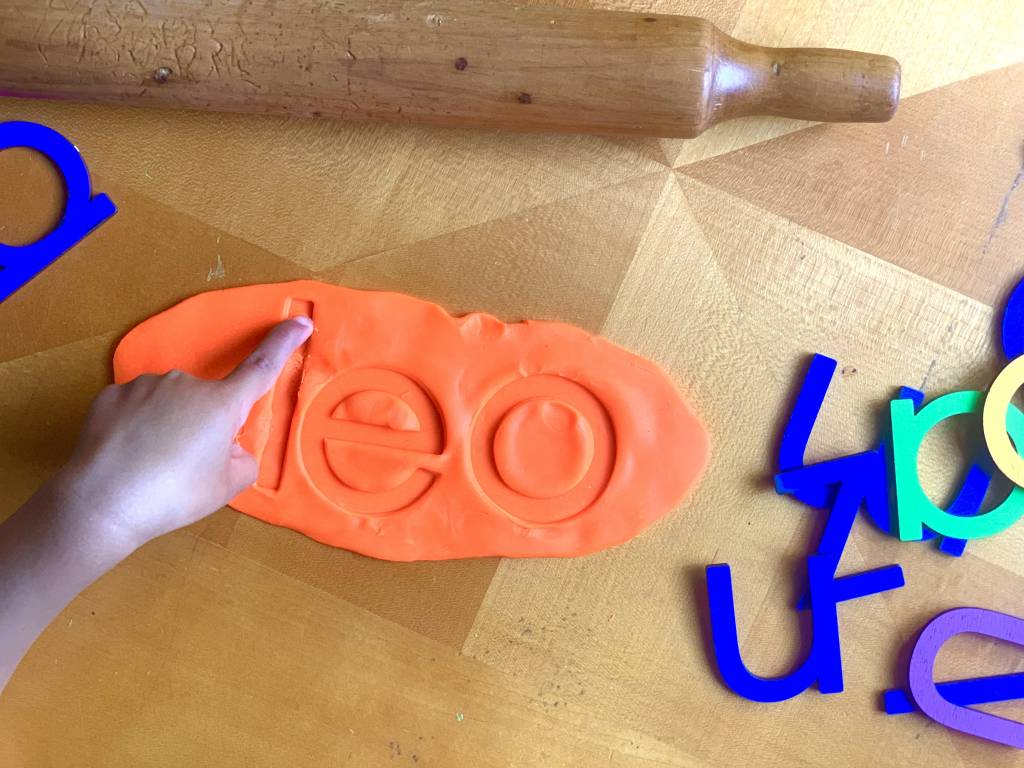
Variant: follow the impression with your finger, while sounding out the letter.
2. Hidden sounds
Materials: Rectangular container, sand or rice, vowels or groups of 5 letters.
Nowadays sensory activities are currently on the rise. For this activity a sensory table is ideal , but if you don’t have one, a rectangular container will work very well. Fill the container with sand or rice and hide the selected vowels or letters. Sound out a letter and have him find it. When it is found repeat the sound again. When the little one is familiar with the sounds, encourage him to choose the letter he will be looking on his own next. Remember to use the sound of the letter instead of the name.
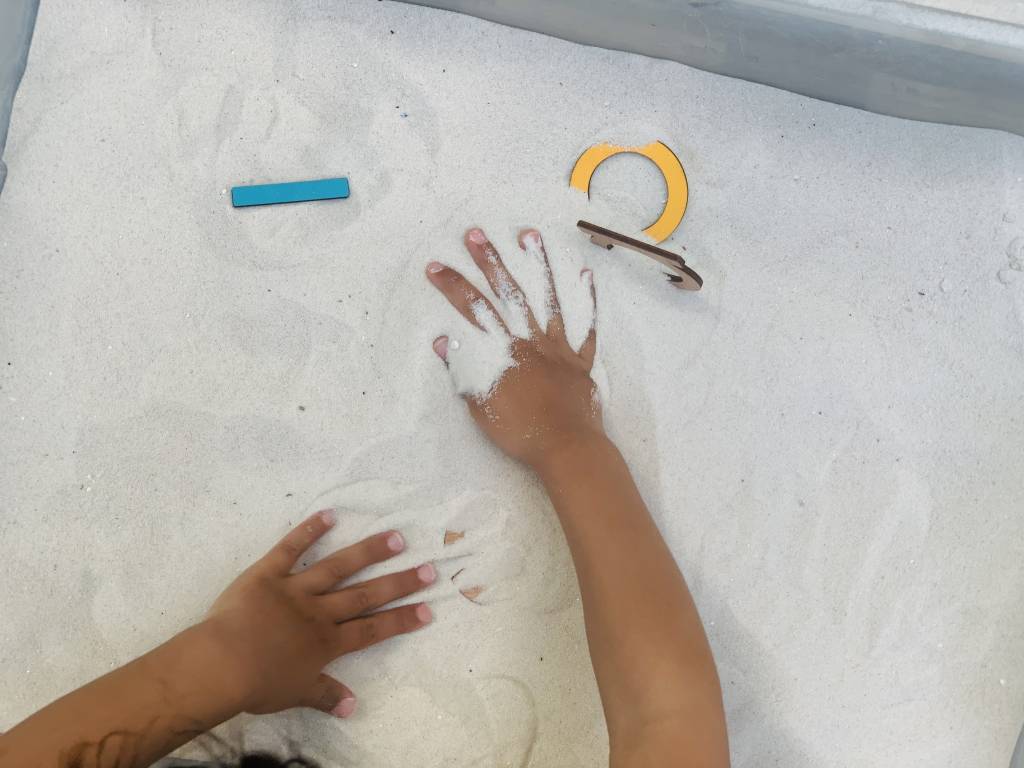
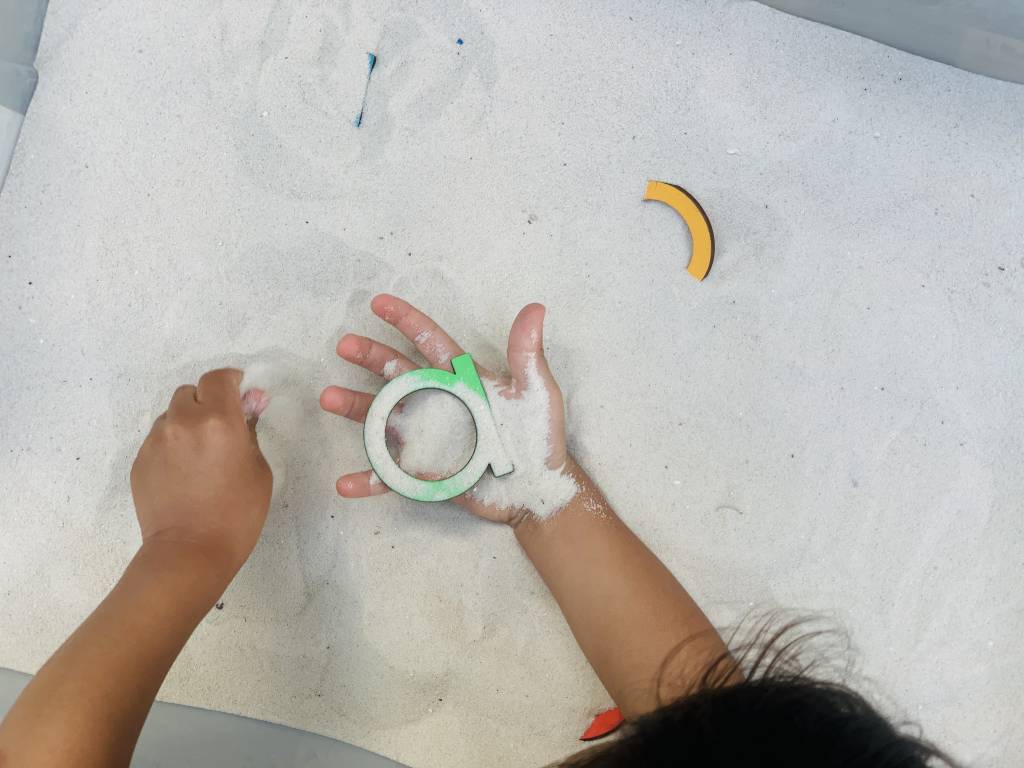
3. Letters and tracing
Materials: Letters corresponding to short words, pencil, thick marker and paper.
Lay the paper on a table and make a word with the selected letters. Trace the outline of the letters. Encourage your child to use the thick marker to trace the middle lines of the letters. If it is still difficult for him, you can help him by leading his hand to familiarize him with the trace. As you review each letter, say the sound of the letter out loud together. At the end, put the sounds together to read the word. Use short words that your child is familiar with and gradually increase the difficulty.
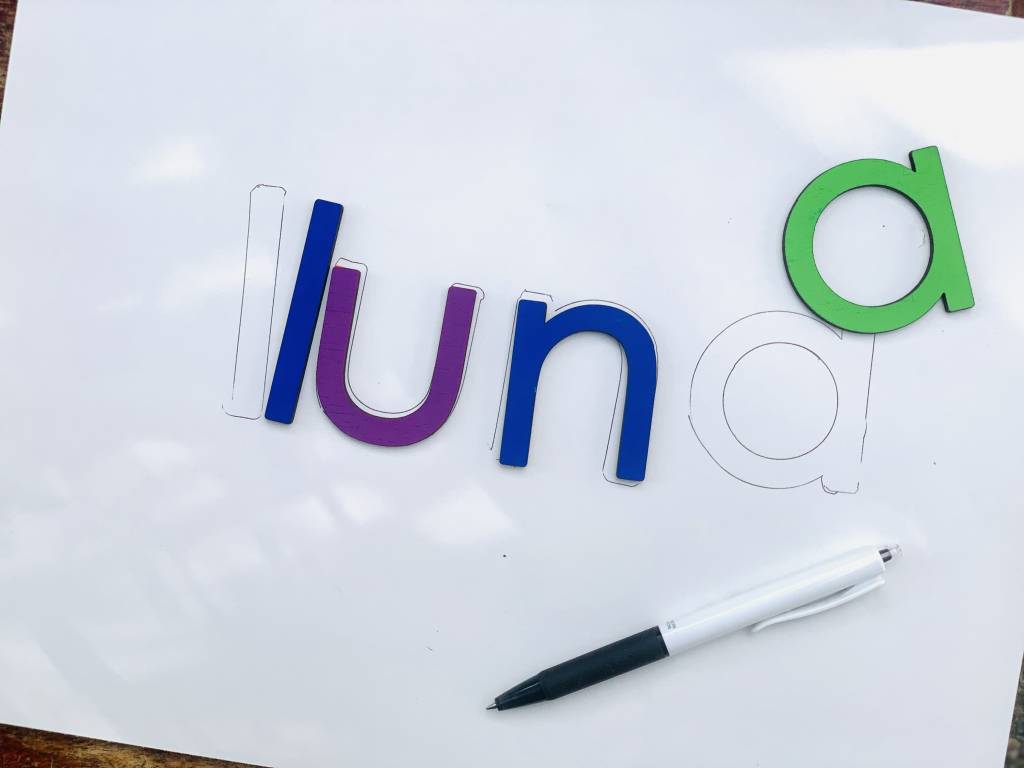

Variant: Use the outline letter you drew to place the corresponding letter on top. Remember to repeat the sounds of each letter.
We hope you enjoy these activities together. What activities have you done to introduce your little one to the beautiful world of letters?

